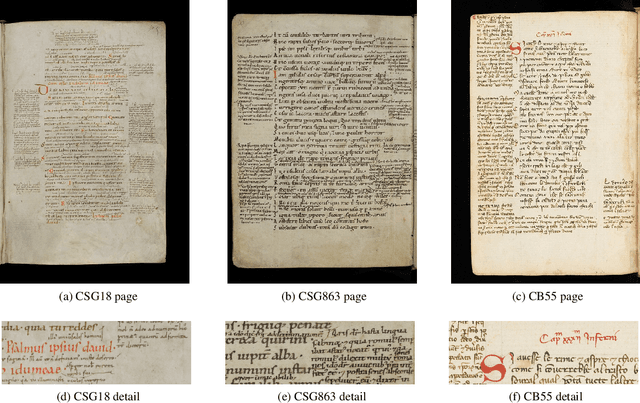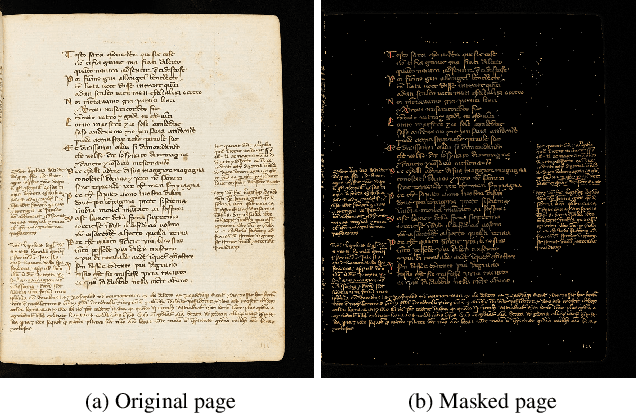Emanuela Colombi
U-DIADS-Bib: a full and few-shot pixel-precise dataset for document layout analysis of ancient manuscripts
Jan 16, 2024Abstract:Document Layout Analysis, which is the task of identifying different semantic regions inside of a document page, is a subject of great interest for both computer scientists and humanities scholars as it represents a fundamental step towards further analysis tasks for the former and a powerful tool to improve and facilitate the study of the documents for the latter. However, many of the works currently present in the literature, especially when it comes to the available datasets, fail to meet the needs of both worlds and, in particular, tend to lean towards the needs and common practices of the computer science side, leading to resources that are not representative of the humanities real needs. For this reason, the present paper introduces U-DIADS-Bib, a novel, pixel-precise, non-overlapping and noiseless document layout analysis dataset developed in close collaboration between specialists in the fields of computer vision and humanities. Furthermore, we propose a novel, computer-aided, segmentation pipeline in order to alleviate the burden represented by the time-consuming process of manual annotation, necessary for the generation of the ground truth segmentation maps. Finally, we present a standardized few-shot version of the dataset (U-DIADS-BibFS), with the aim of encouraging the development of models and solutions able to address this task with as few samples as possible, which would allow for more effective use in a real-world scenario, where collecting a large number of segmentations is not always feasible.
Efficient few-shot learning for pixel-precise handwritten document layout analysis
Oct 27, 2022



Abstract:Layout analysis is a task of uttermost importance in ancient handwritten document analysis and represents a fundamental step toward the simplification of subsequent tasks such as optical character recognition and automatic transcription. However, many of the approaches adopted to solve this problem rely on a fully supervised learning paradigm. While these systems achieve very good performance on this task, the drawback is that pixel-precise text labeling of the entire training set is a very time-consuming process, which makes this type of information rarely available in a real-world scenario. In the present paper, we address this problem by proposing an efficient few-shot learning framework that achieves performances comparable to current state-of-the-art fully supervised methods on the publicly available DIVA-HisDB dataset.
 Add to Chrome
Add to Chrome Add to Firefox
Add to Firefox Add to Edge
Add to Edge